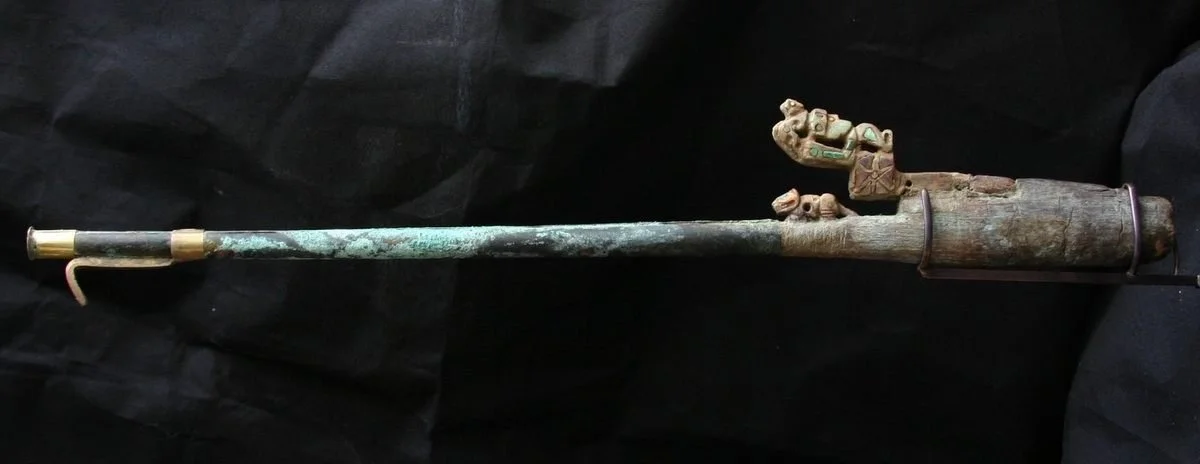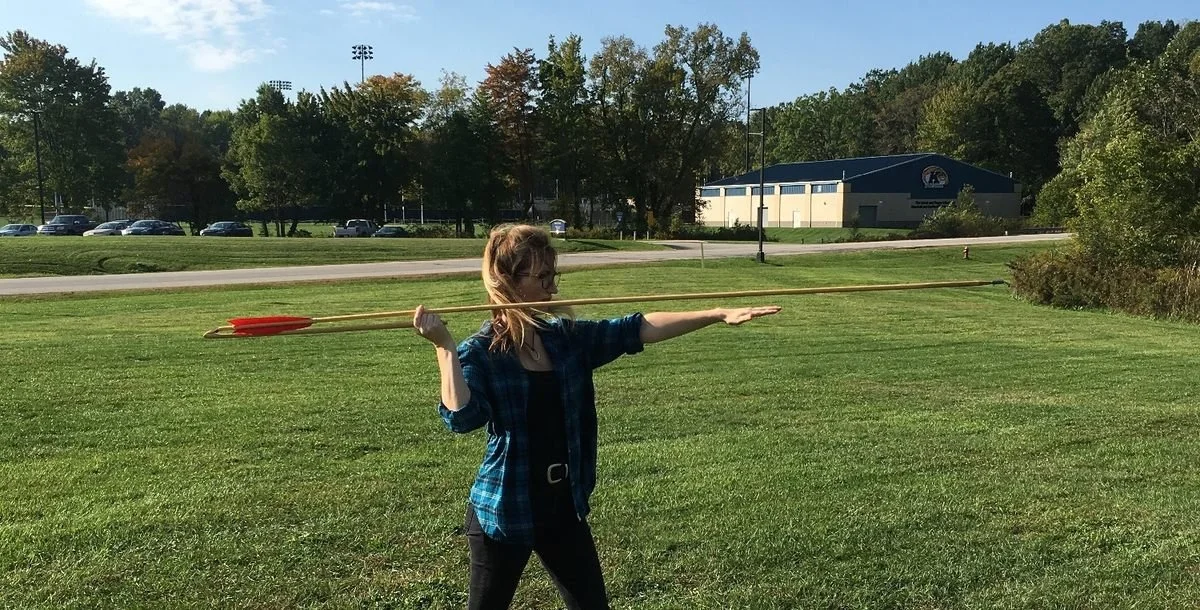One throw at a time, a female archaeologist is disproving the notion that men are hunters and women are gatherers.
Atlatls use leverage to launch spears faster and farther than hand-thrown javelins. METIN EREN
Men have long struggled to understand the intricacies of women. anthropologist William Webb, for example. When he discovered hunting tools in the ancient graves of women in the 1940s, he was momentarily baffled. Webb, who was in charge of the University of Kentucky's archaeology and anthropology department at the time, was looking into the Late Archaic (5,000 to 3,000 years ago) Indian Knoll site. He came to the conclusion that the hunting equipment—in this example, an atlatl, or spear-thrower—had either been left there by husbands or because they constituted attractive hair accessories.
“It is hardly to be supposed that … women would have any practical use in life for an atlatl … such occurrences represent true burial offerings to the dead of artifacts primarily intended for the use of men,” Webb wrote in 1946.
Webb, a white cis-man, was working under the long-held presumption that hunting was a male-dominated activity.
“There’s a lot of assumptions about gender roles in archaeology that really aren’t supported,” says Metin Eren, an experimental archaeologist at Kent State University in Ohio. “The reason why we have assumptions about gender roles is because it was males over the 20th century that made those assumptions. It’s important to give preeminence to evidence and not assumption.”
An ornately carved atlatl from Peru. There is evidence of atlatl use on every continent except Africa. LOMBARDS MUSEUM/WIKIMEDIA/CC
There is no reason to believe that ancient women didn't employ hunting equipment to lethal effect, according to recent research, including a new study published in Science Reports. Communities of hunters on all continents, with the exception of Africa, switched from throwing spears like javelins to using the atlatl, a type of handle that uses leverage to propel a spear farther and faster, as early as 22,000 years ago (though this may be due to a lack of archaeological evidence on what would be a much older timeline). For the current study, 108 participants were asked to throw spears in a variety of methods. Males were superior to females at javelin-style throwing. But when an atlatl was involved, that distinction virtually vanished. The results are consistent with the "atlatl equalizer hypothesis," put forth by scholars John Whitacker and Kathy Kamp at Grinnell College in Iowa, which postulates that using strategic leverage, hunting may have been a common activity in an ancient community.
“This and other research seems to be all converging on the idea that there’s much more diversity in how we organized labor in the past, and it doesn’t always fall along the gender lines that we see in the present,” says archaeologist Randall Haas of the University of Wyoming, who was not involved in the study.
Petroglyphs at Valley of Fire State Park in Nevada depict early atlatl use. JOEL ZATZ/ALAMY
2020 saw the discovery of a 9,000-year-old corpse in the Andes by Haas, his colleagues, and members of the Mulla Fasiri village in southern Peru. This site turned out to be the earliest known female burial with big-game hunting equipment neatly arranged around her body and enormous mammal bones dispersed throughout. The team determined that 30 to 50% of ancient big-game hunters in the tribes they studied were female after looking at the remains of an additional 429 individuals from 107 locations throughout the Western Hemisphere. This result was shocking to preconceived notions about the gender roles of the earliest hunters and gatherers. Thereafter, a flurry of studies into women's hunting roles emerged. According to Haas, "we stand to learn something about a huge section of humanity throughout the world and into our deep evolutionary past" if we can comprehend how these technologies mix with gender dynamics.
These concepts are frequently tested in Kent State's experimental archaeology lab. A loadable lever composed of wood, bone, or antler is known as an atlatl. According to lead author Michelle Bebber, an experimental archaeologist at Kent State, think of it as a tennis ball launcher for a dog. An atlatl has a tiny spike at the end opposite the handle that is roughly two feet long but might be as little as five inches. For the study, a six-foot-long, strong spear-like dart's butt end can be notched there. The thrower employs essentially a standard throwing action while holding the handle rather than the dart. Leverage handles the rest.
Bebber encouraged students—as well as their parents, partners, and anybody else who happened to turn up—to try their hand at both throwing styles at an abandoned sports field on the outskirts of school. She "countless hours" on the field in the pouring rain and the snow. Coauthor Eren comments, "It's a testament to her dedication to this project." There has never been anything like this done before since she was out there throughout the winter when it was chilly and she launched over 2,100 weapons.
Lead author and experimental archaeologist Michelle Bebber holds an atlatl loaded with a six-foot dart. METIN EREN
The effort was worthwhile. Males were found to throw javelins at speeds between 26 and 52 feet per second and females between 16 and 38 feet per second, which is faster than females. But when it came to throwing darts, sex didn't matter as much; grip strength, which isn't as closely related to sex, was more crucial. In essence, the researchers came at the conclusion that women have the same atlatl capacity as men. "If you're picking teams for the javelin on the playground, you'll pick teams with powerful males. Eren quotes colleague and University of Tulsa anthropologist Briggs Buchanan who adds, "For the atlatl, you will only pick strong."
"I think that narrative is really important to see, that women weren’t just passive and that they were able to fully participate in hunting activities," claims Bebber. They were probably inventive and perceptive, and they might have even developed this kind of technology.
According to the researchers, the atlatl's "equalizing opportunities" might transcend sex and gender stereotypes. Bebber is considering a broader spectrum of ages. Haas wants to know how much talent counts and whether it holds true in comparison to other primitive hunting tools. It seems to support certain earlier suggestions, and “I think it’s a solid analysis and it seems to bear out some earlier hypotheses,” he says. The results, in my opinion, are persuasive and it does a wonderful job of thoroughly examining. It would be interesting to see similar tests with archery technology, as well as some extensions with people who have more experience.
Haas concurs that this research adds crucial subtlety to our understanding of gender roles, both historical and contemporary. "Understanding the extent to which we engaged in sexual division of labor, or any kind of division of labor in the hunting and gathering context can help us better understand any disparities, unification, or divisions that we see between sexes or in different gender roles today," he claims. "I won’t say [this study] confirms, but it supports, this idea that our previous understanding of gender and labor practice in the past was at least off the mark by quite a bit," the author says.










